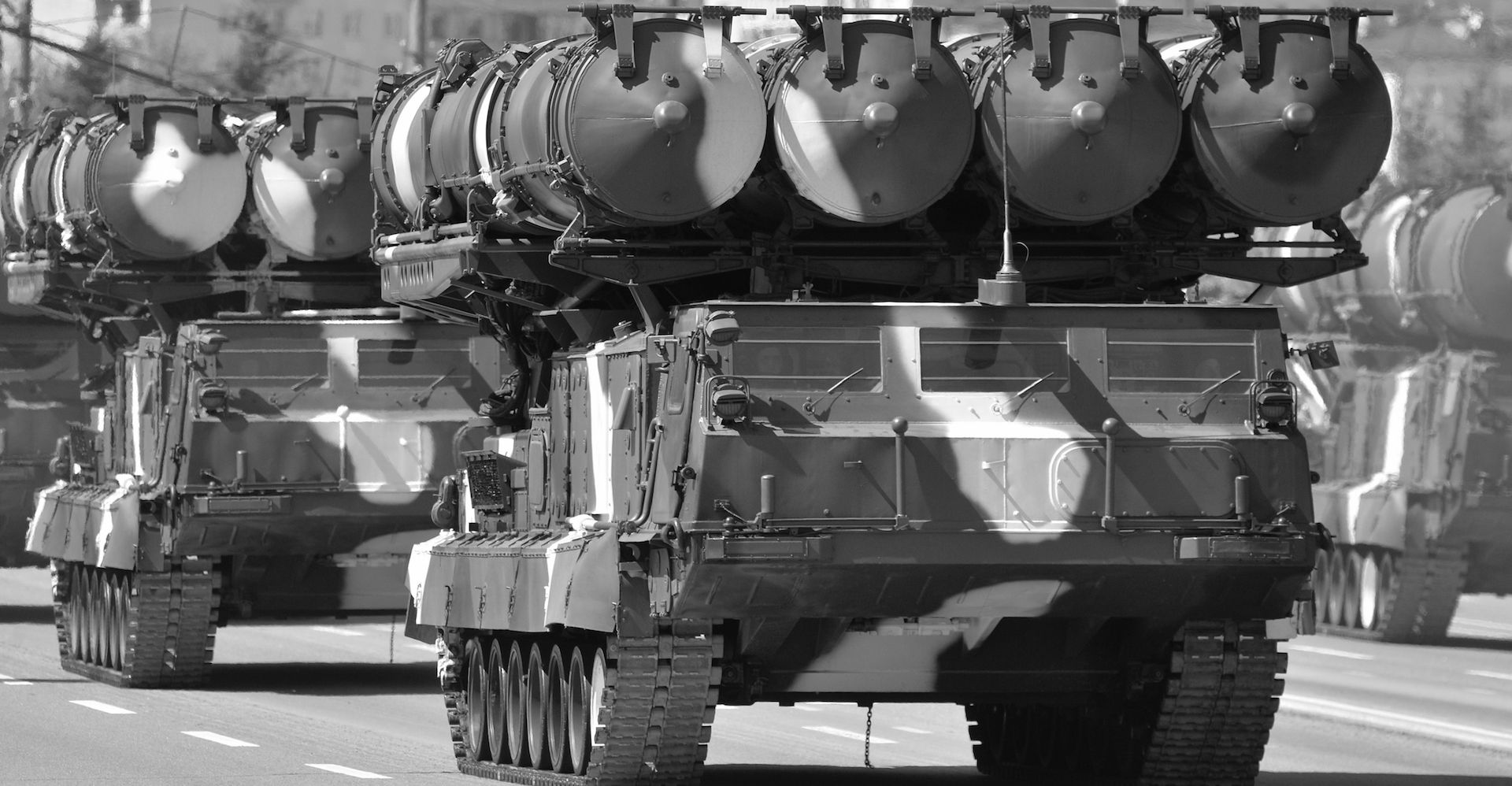Syria's S-300 Air Defense System in Perspective

William J. Tucker serves as a senior security representative to a major government contractor where he acts as the Counterintelligence Officer, advises on counterterrorism issues, and prepares personnel for overseas travel. His additional duties include advising his superiors in matters concerning emergency management and business continuity planning. Mr. Tucker regularly writes on terrorism, intelligence (geopolitical/strategic), violent religious movements, and psychological profiling. Prior to his current position, Mr. Tucker served in the U.S. Army where he frequently briefed superior military officers in global terrorist movements and the modernization of foreign militaries. Additionally, he advised Department of Defense Police on domestic and international terrorist movements and trends in guerrilla attacks. Mr. Tucker received his B.A. and M.A. in Homeland Security (both with Honors from American Military University – AMU). You can follow William on Twitter @tuckerwj.
In an interview with Hezbollah’s Al Manar television station, Syrian President Bashar al-Assad claimed to have already received an S-300 air defense system of Russian manufacture. More accurately, Assad said “missiles” which could indicate that the entire S-300 kit hasn’t yet arrived in Syria. At a time of civil war when the government is pitted against an asymmetric foe without any air assets, the question of why Syria would bother purchasing such a system seems rather profound. Also at the forefront of this discussion is the possibility that Israel may attack these new air defense assets thus rendering the purchase moot. Conceivably, there must be more at play than a simple arms purchase. Granted, this is a profound observation, but it is one that should be dissected in a timely manner as this move by Assad and Russia is rather provocative. It is Russia, however, where this analysis should begin.
Russia is following a dual track role in its relations with the Assad regime, but it is also using that relationship as a lever in its relations with the U.S. and its allies in Europe. The move by Moscow to sell this system to Syria at a diplomatically sensitive time is meant to underscore Russia’s resolve in standing with Damascus. This isn’t to say that Russia’s motives are altruistic; rather that Moscow has a strategic desire to maintain a foothold in the Mediterranean basin. Losing Assad would undermine this goal and force Russia to rely on other levers in it’s near abroad such as the Caucasus, the Balkans, or energy supplies to Europe. For each lever lost, Russia would find its options narrowed and thus much less persuasive. By selling an advanced air defense system to Assad, Russia can complicate the planning of a conventional intervention in the Syrian civil war by western powers. Furthermore, it would serve to undermine U.S. initiatives in the region by extending Assad’s remaining hold on power. It is no accident that Russia made the sale public as the U.S. and the EU were discussing arming the Syrian opposition.
Considering this sale, the Israeli question looms large. As Hezbollah and Iran continue to double down in their combined effort to save Assad, Israel has engaged in targeted strikes against weapons that could wind up in the wrong hands – namely the hands of regional non-state actors. Israel has executed these strikes with near impunity, but from Syria’s perspective an upgrade in air defense would be meant to temper the targeted strikes. If the Syrian and Russian reading of the situation vis-à-vis Israel is correct, then the Israelis would be forced to expand air operations by first focusing on wide scale suppression of enemy air defense (SEAD) operations. Doing so would force the IAF to widen its targeting of air defense systems and increase the rate of Israeli air strikes. Once the air defense network has been mitigated, only then could Israel strike the intended weapons or Syrian strategic/tactical targets. With the rate of airstrikes forced to increase, then it would follow that pressure on Israel – most likely from the U.S. – to abandon this method of controlling the arms flow would increase. At least, that’s one interpretation of the Syrian, and/or Russian mindset.
Israel can avoid this scenario, however. They could conceivably strike before the S-300 system is set up and integrated into the existing Syrian air defense network. Although this is a workable approach, it does entail some risk. There is the ever present possibility that Russian soldiers could be involved in the set-up, network integration, and regular maintenance of the new system until Assad loyalists are trained to operate it. Striking prematurely could put the IAF in the position of launching air strikes against Russian soldiers – the fallout of which would damage already tense ties between Israel and Russia. Because the S-300 is a long range system, it would cover Israeli, Lebanese, and Syrian airspace. This is a situation that Israel simply cannot accept. Damaging already frayed relations with Russia by striking the Syrian air defense network directly would seem to be the better alternative.
Another avenue to consider is the use of EW, or Electronic Warfare, to spoof the air defense network and allow the IAF to continue its targeted strikes – albeit in a limited fashion. Israel has successfully used EW against Russian air defense systems in Syria since at least 1982 and perhaps more recently. According to several accounts of the now infamous 2007 bombing of the al-Kibar nuclear reactor, the Syrian air defense systems were first tracking nonexistent aircraft before crashing altogether. Shortly after, Russian technicians – with a little prodding from Iran – were sent to Syria to investigate these claims. One would expect that Russia has upgraded their software to better protect against such EW threats, but it is unlikely that Israel has refrained from making advancements of their own. In short, this is a lower risk strategy that Israel has successfully employed in the past and will definitely consider in future operations.
Looking forward, the S-300 air defense system in Syria must be kept in perspective. It can certainly pose an offensive threat to Syria’s neighbors, while inversely it complicates foreign air operations in Syrian airspace. Now that the U.S. is strongly considering arming some Syrian opposition movements and the EU has lifted an arms embargo on sales to Syrian rebels, the ground fighting between the Assad regime and rebel factions may intensify. This serves the interests of all those nations that wish to see Assad’s ouster sooner rather than later. If arming the Syrian opposition also serves to bloody the nose of Iran and Hezbollah, then so much the better from the Israeli and western perspective. Essentially, the fighting on the ground will come back into the foreground and dominate the public talks regarding Syria’s future. For Israel’s part, covert operations on the ground in Syria are always a possibility. All told, the S-300 system is a threat, but it is not the cure to all of Assad’s ills. There are far too many avenues of approach to target the remaining Syrian regime and very few of those avenues concern Syrian airspace.
